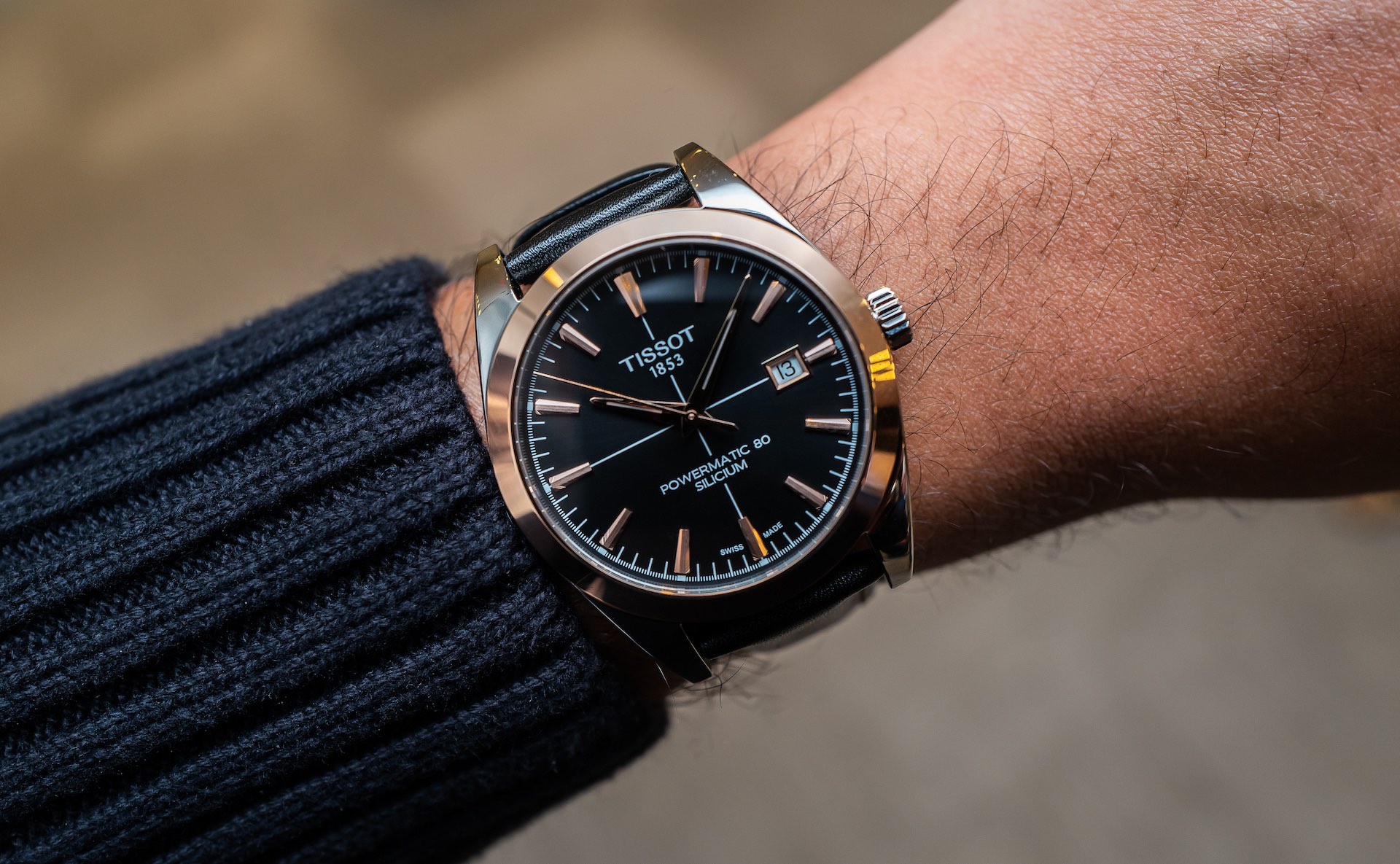
I have to give Tissot a lot of credit to make a simple dress watch as attention-grabbing as the new Gentleman collection is. Unwavering aversion to the name aside, the Tissot Gentleman watch is the result of a series of decisions with the goal in mind of offering a conservative everyday watch that doesn’t shout “entry-level” to the world. One of the benefits of being under the massive Swatch Group umbrella is the cost-effectiveness of using the Powermatic 80 movement.
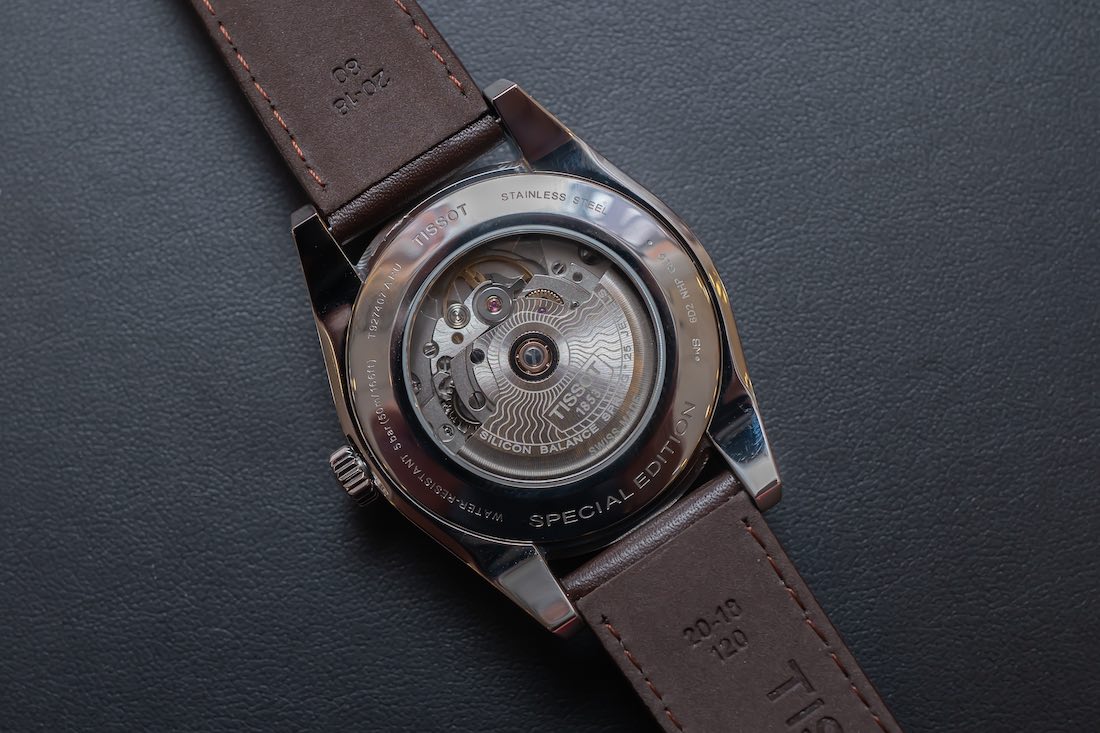
One of the things that made the under-$1,000 Tissot Ballade from 2017 a bit forgettable for me was that it came off as simply a vehicle for showing off the then-new silicon balance spring. The Tissot Gentleman takes the Powermatic 80 movement as a given and uses its resources to offer a truly compelling sales pitch: a solid 18k-gold bezel in a competitive price category that is nearly universally associated with gold-plating.
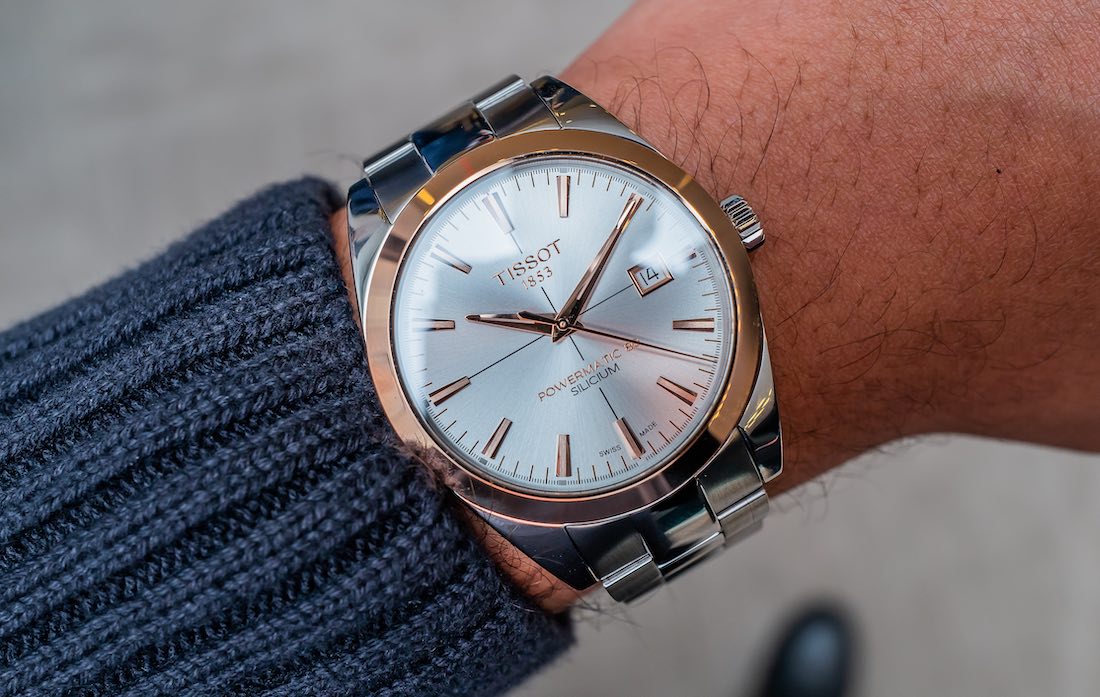
First off, the design of the Tissot Gentleman would be milquetoast if it weren’t for the fact that the finishes and quality, when seen in the metal, are really pretty impressive. I’d quite confidently say it looks and feels like a piece that’s probably a little bit more than a full tier above this price category. So, the above-competent finishing does a lot for this watch. That said, the decision to have “Powermatic 80 Silicium” in large font at 6 o’clock is perplexing, to say the least (especially the addition of “silicium”). This information could easily be left on the caseback. It’s interesting to me that the name of the watch, itself, doesn’t show up anywhere on the timepiece. For this, I am thankful.
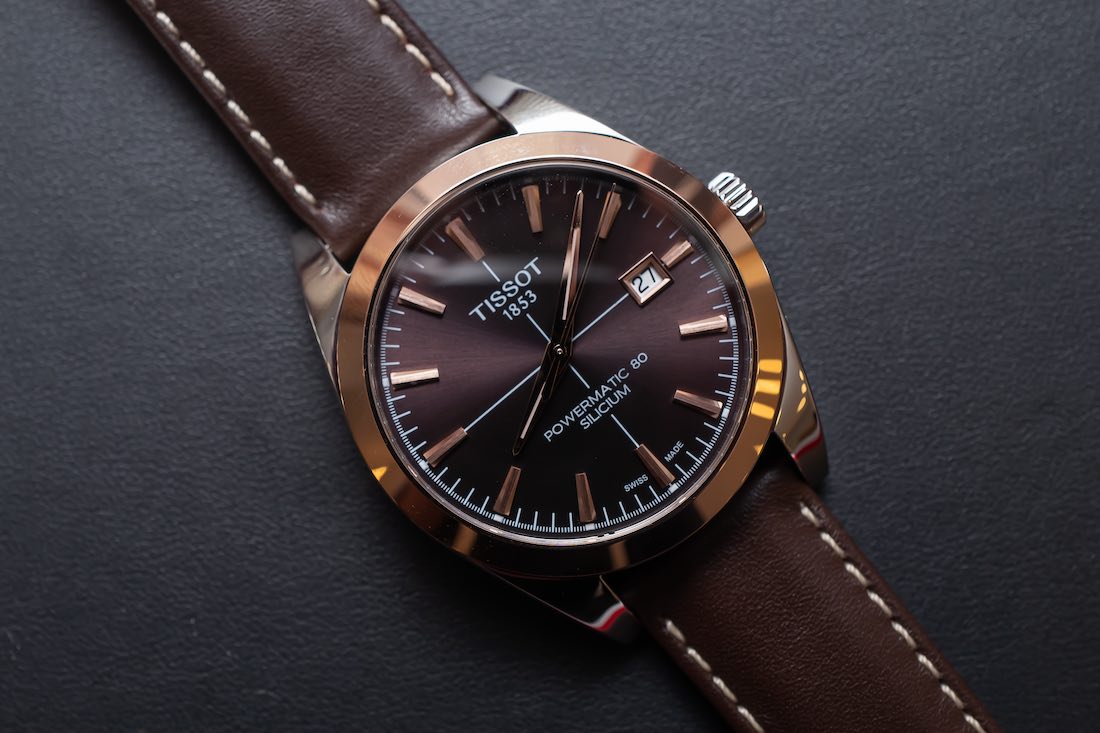
Still looking at the dial, I’m agnostic about the crosshair. What I’m not agnostic about are the beveled and satin-finished pink-gold applied hour markers, pink-gold faceted dauphine hands, and date-window frame. A watch like this can easily fall into the illegibility-and-glare trap, but Tissot dodged these pitfalls. The hour markers and hands are done in lume, as well.
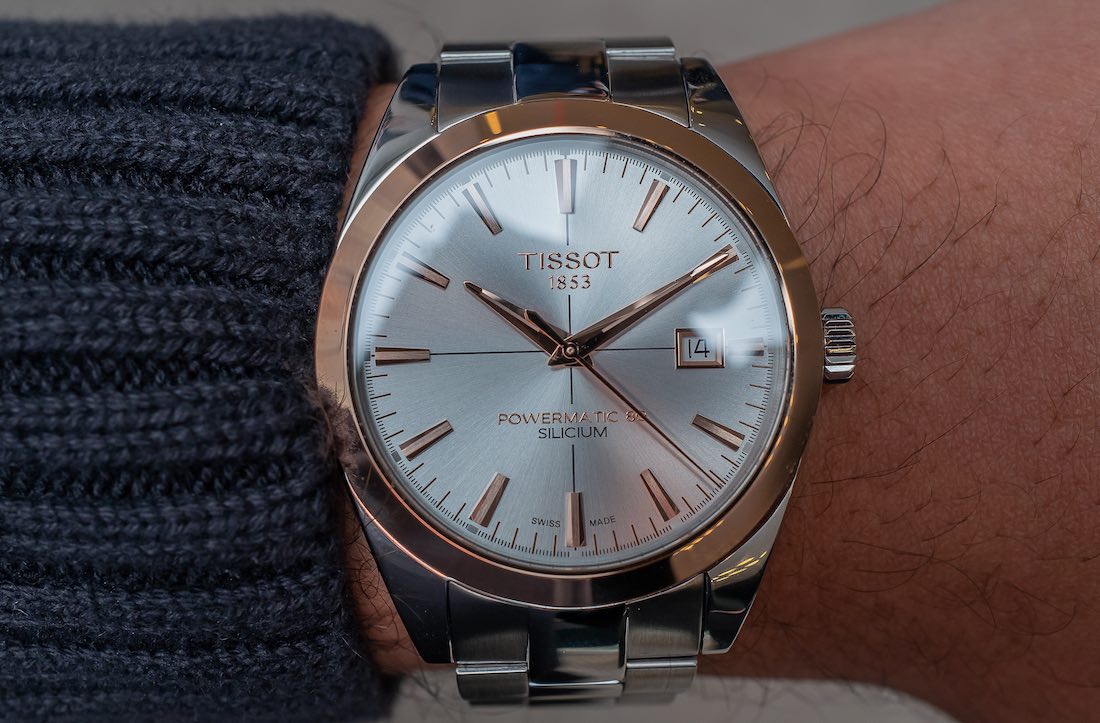
There are four available dial colors, all with the same pink-gold bezel: black, cream opaline, chocolate, and silver. I noticed several people were very into the cream opaline model, but I wasn’t really that smitten with it and actually prefer the chocolate, myself. (In fact, I was so not-smitten that I seem to have forgotten to photograph it.) The chocolate, black, and cream opaline come on matching leather straps, while the silver dial comes on a steel bracelet. I think the consensus here leans toward the strap.
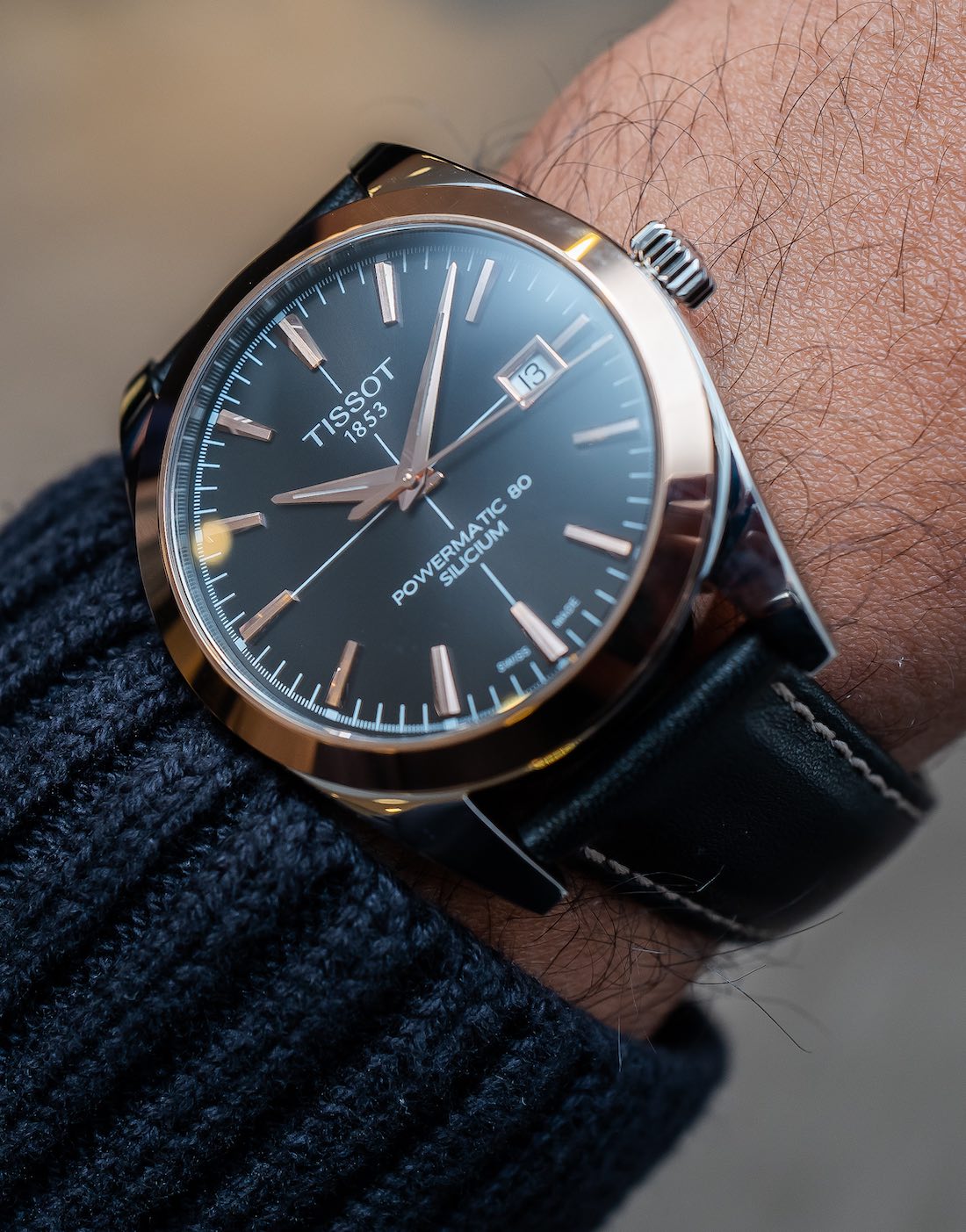
Tissot certainly needs to appeal to Western buyers, but can’t alienate the Asian markets that are basically keeping the industry afloat. The 40mm-wide and 10.64mm-thick case (with a 50M water resistance) is an ideal size to accomplish this. The watch wears perfectly on the wrist and, while I’m sure a lot of people will clamor for a smaller version, this 40mm case checks all the boxes for an inaugural model. Also, good luck getting away with an additional smaller 38mm version and not having it be called the “Gentleboy.”
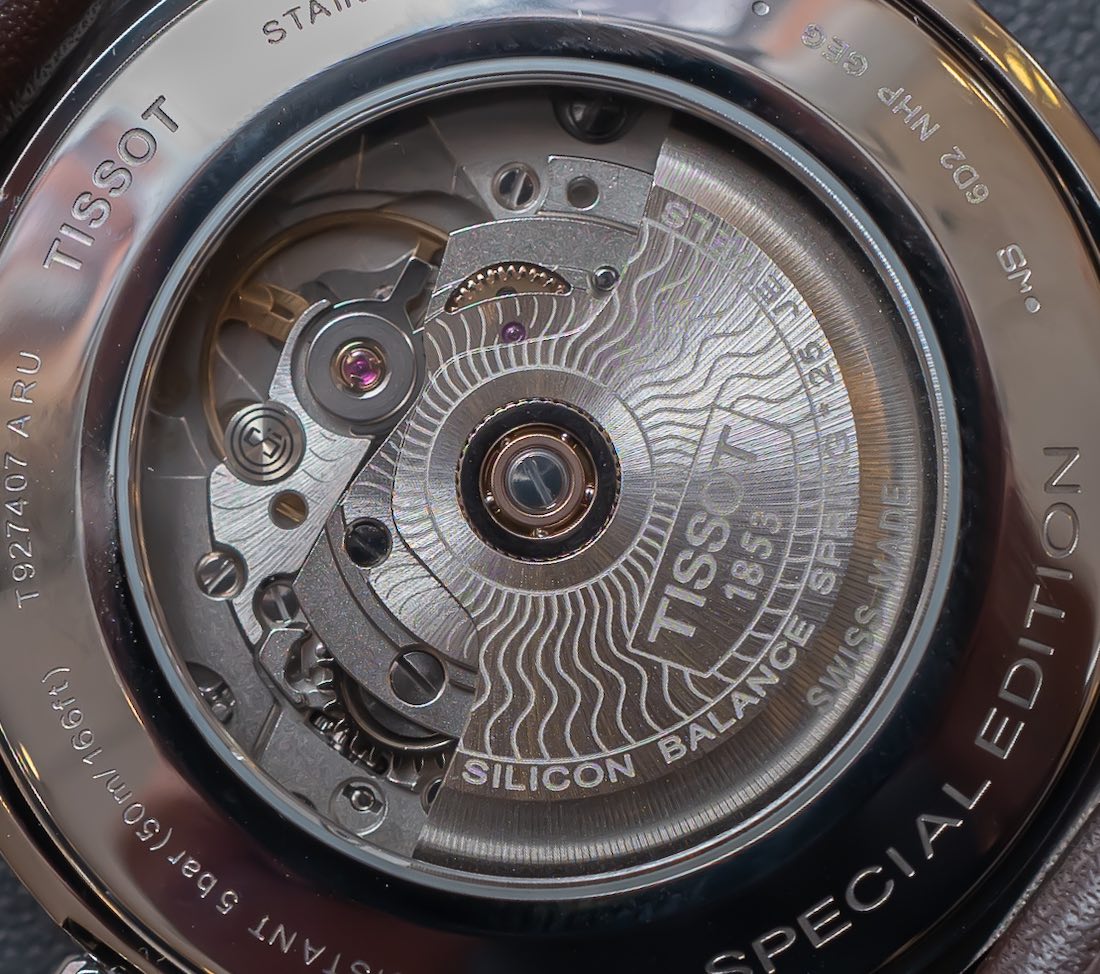
The Powermatic 80 is a highly competent movement used by the Swatch group in many of their more affordable watches. It uses a silicon balance spring and has an 80-hour power reserve. Most casual consumers coming in at this price-point are not making decisions based on movement accuracy or their high expectations of movement finishing. Power reserve, reliability, and longer periods of time between servicing are practical developments that appeal to most buyers.
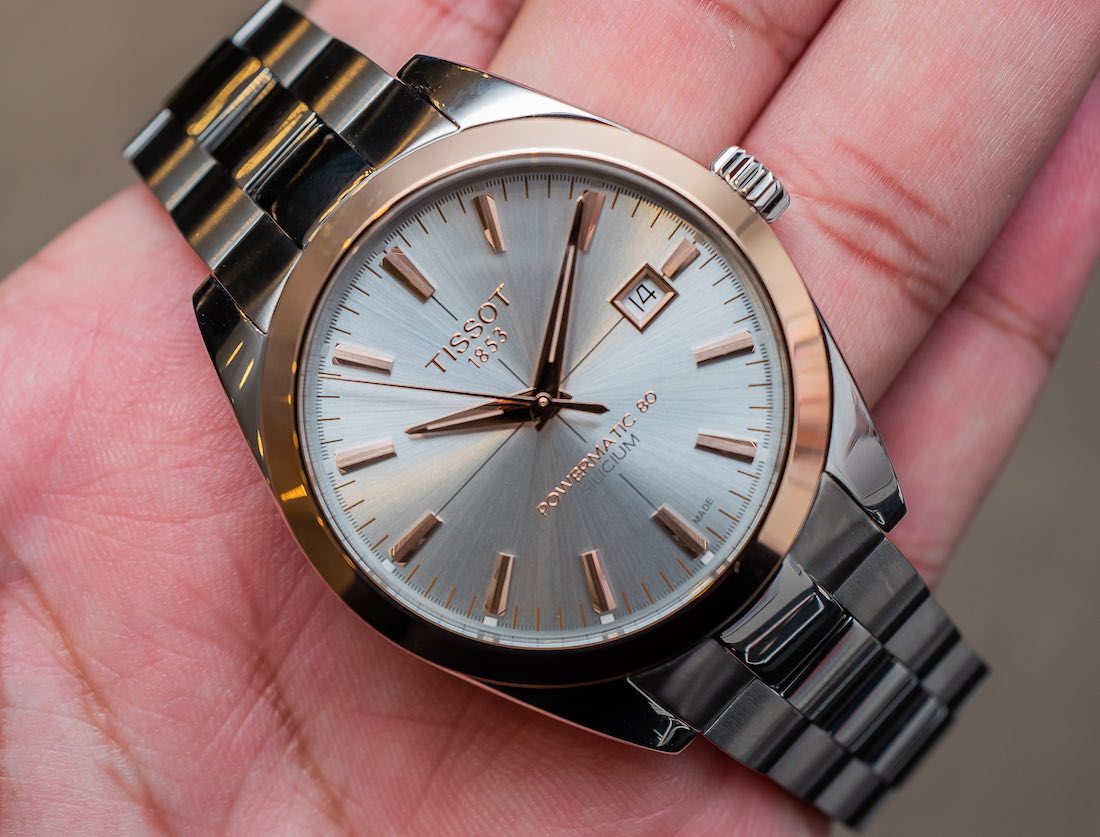
The Tissot Gentleman is an example of how a conservative dress watch can be appealing, even to more jaded watch enthusiasts, by getting everything right and offering something the competition doesn’t (in this case, the solid gold bezel). The watch will be priced at $1,300 on the strap and $1,350 on the bracelet when it’s available in early summer this year in stores as well as their e-commerce page. You can learn more at tissotwatches.com
